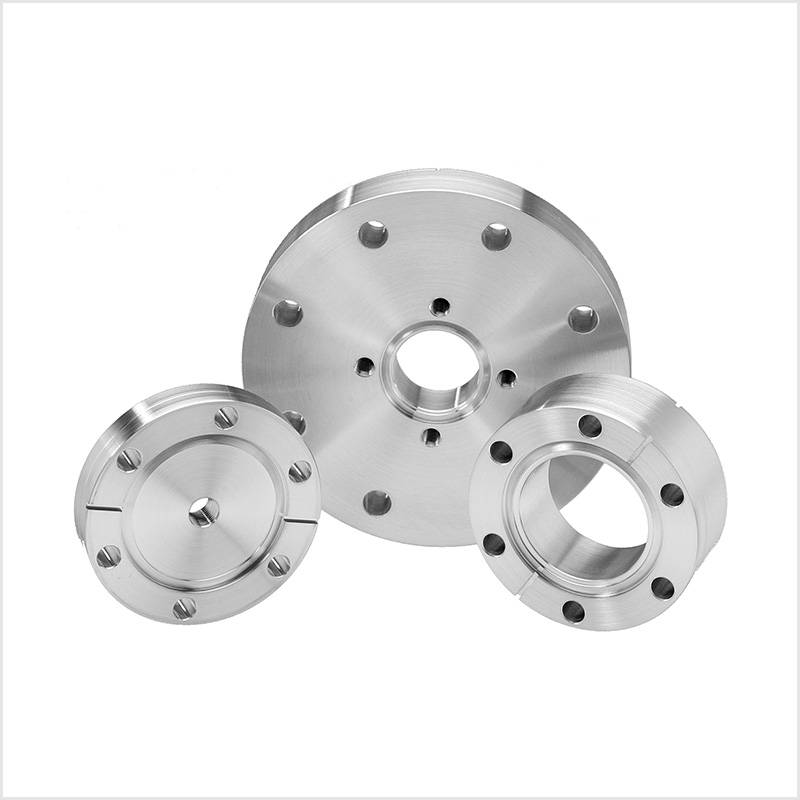Efficiency and Security: The Significance of Vacuum Flange Systems in Commercial Settings
In the world of manufacturing applications, the efficiency and safety of procedures are vital. One frequently neglected element that plays a key role in achieving these goals is the vacuum flange. These unique fittings are essential for creating trustworthy links in vacuum setups, allowing for optimal operation in a range of fields. From food manufacturing to chip production, vacuum flanges ensure that systems can uphold the essential conditions for standards and efficiency.
The role of vacuum flanges goes beyond simply connecting pipes and equipment. They serve as key points for maintaining pressure stability within systems, avoiding leaks that could result to pollution or dangerous situations. As industries increasingly focus on streamlined operations and stringent safety standards, comprehending the importance of vacuum flanges becomes essential for designers and operators alike. By investing in top-notch flanges, companies can enhance their efficiency while safeguarding their processes and personnel.
Types of Vacuum Flanges
Sealing flanges are essential components in ensuring a hermetic environment in multiple industrial applications. There are several types of vacuum flanges, each designed to meet specific requirements based on the vacuum level, temperature, and application. The typical types include the KF flange and the CF (ConFlat) flanges. KF flanges are commonly used in low to medium vacuum systems and are famous for their convenience and quick assembly. They utilize a metal-on-metal seal and can maintain seal integrity with relatively low clamping force.
CF flanges, on the other hand, are designed for severe vacuum applications and provide enhanced sealing capabilities. They consist of a metal seal compressing a polymer, which ensures minimal leakage and highest reliability in challenging environments. CF flanges come in different sizes and thicknesses, making them versatile for multiple industrial setups. Their strong design allows them to tolerate increased pressures and temperatures, making them ideal for applications in fields such as semiconductor manufacturing and particle accelerators.
Another notable type is the ISO flange, which is standardized and often used in combination with various components in vacuum systems. ISO flanges are compatible with a broad spectrum of vacuum equipment, making them a efficient choice for modular configurations. They provide decent sealing properties and are favored for their swappability. Grasping the different types of vacuum flanges enables companies to select the right solution for their specific needs, ensuring both effectiveness and security in their processes.
Implementations in Industry
Vacuum seals are essential parts in different industrial applications, notably in the fields of production and research. In semiconductor production, these seals create the necessary vacuum conditions for operations such as thin film deposition and etching. A robust vacuum system ensures that impurities are limited during the fine procedures of producing microchips, resulting in higher output and efficiency of devices. By keeping consistent vacuum levels, manufacturers can achieve higher precision and consistency in their products.
In the medicinal and bioengineering industries, vacuum flanges play a vital role in ensuring product safety and efficacy. The capability to create a vacuum environment safeguards sensitive materials during production, such as when performing lyophilization, which removes moisture without affecting the structure of the materials involved. Furthermore, vacuum systems equipped with flanges help ensure aseptic conditions in settings where pollution could lead to serious health hazards, making sure that drugs and biological products meet strict criteria.
Another significant use of vacuum flanges is found in the area of material science, especially in the research of thin films and coatings. Researchers often utilize vacuum chambers connected by flanges to carry out experiments in controlled environments. This allows for the application of thin films with exact thickness and composition control, which are crucial for applications in optics, electronics, and nanotechnology. By utilizing vacuum flanges , scientists can effectively manipulate materials at the atomic level, paving the way for innovations in various high-tech industries.

Gains for Efficiency and Security
Vacuum seals play a crucial role in enhancing the productivity of various manufacturing operations. By creating a trustworthy seal, these components reduce the risk of fluid losses and ensure optimal vacuum conditions. This tight sealing is crucial for operations like chemical manufacturing and chip production, where even small leaks can lead to significant losses in quality and performance. With vacuum flanges, industries can confirm that their systems work at peak efficiency, minimizing waste and increasing throughput.
In addition to improving efficiency, vacuum flanges play a significant role to workplace safety. A secure vacuum system avoids the escape of hazardous gases and vapors, which is crucial in areas where harmful substances are managed. By limiting potential hazards, vacuum flanges safeguard staff from interaction to dangerous chemicals, thereby lessening the likelihood of mishaps and health problems. This commitment on safety not only helps employees but also encourages a positive organizational culture rooted around care and safety.
In addition, the application of vacuum flanges improves the reliability of industrial equipment. When appropriately installed, these flanges resist varying load and thermal fluctuations, guaranteeing consistent performance over time. This reliability translates to reduced interruptions for repairs, permitting businesses to run smoothly and focus on their main tasks. As a result, acquiring high-quality vacuum flanges leads to long-term savings and improved operational capacity, strengthening their significance in manufacturing contexts.